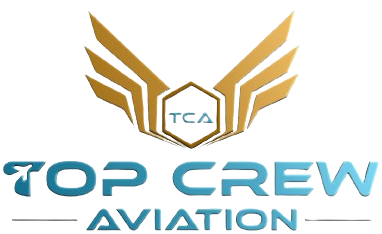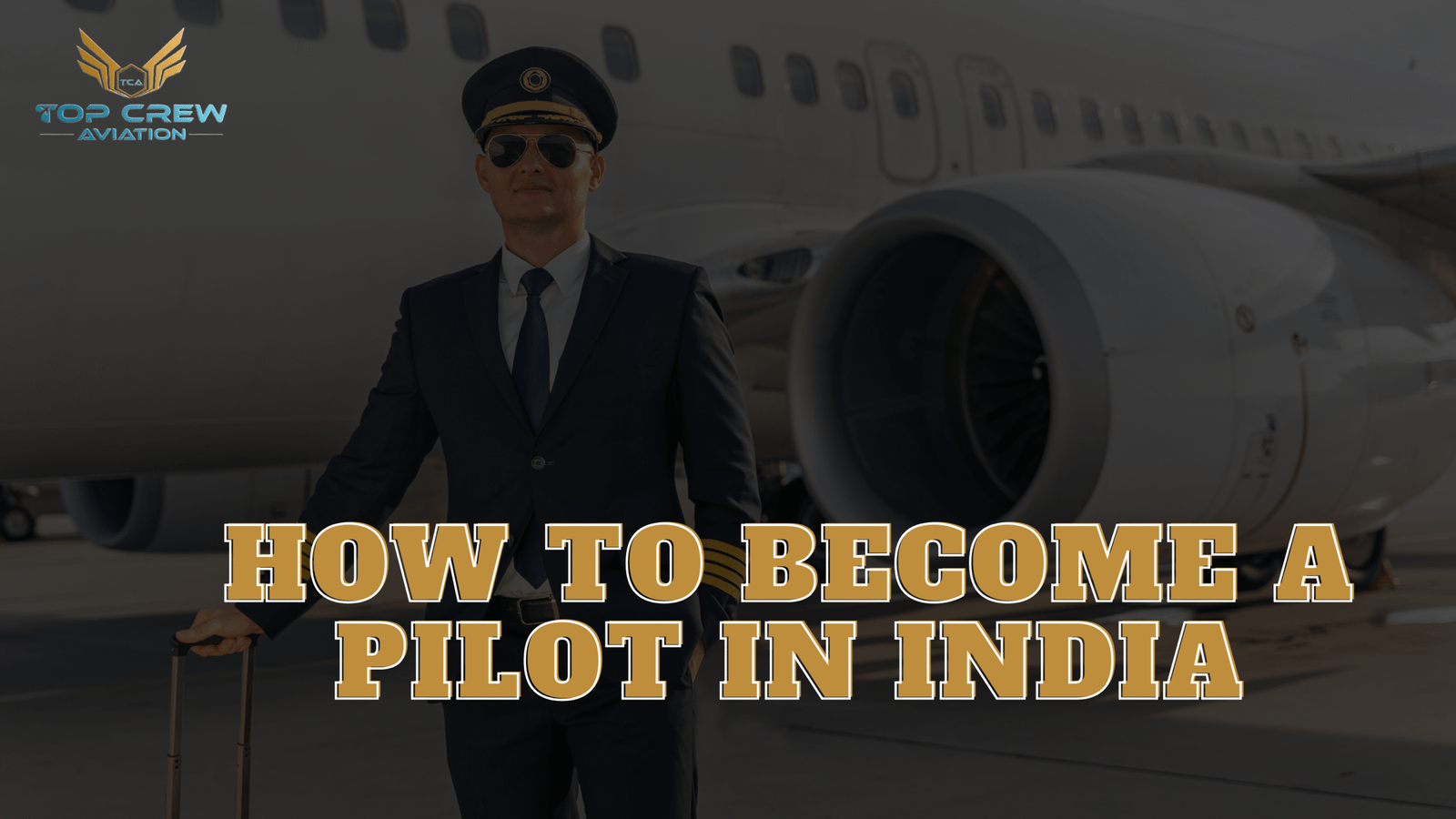Becoming a pilot is a dream many students nurture, especially after completing their 12th grade. The thrill of flying, the prestige of the profession, and the numerous opportunities in both commercial and defence aviation make it one of the most sought-after career paths in India. If you’re someone who has just finished school and is wondering about the steps to becoming a pilot in India, this blog is your complete guide.
In this post, we will break down the entire process of how to become a pilot after 12th, from understanding the basic requirements to how much it costs to become a pilot, so that you can embark on your journey with confidence. And if you’re looking for a trusted aviation training partner, stay tuned till the end for some expert recommendations.
Pilot Career Options in India: Types of Pilots You Can Become
Becoming a pilot doesn’t limit you to just one career path. There are various specialisations within aviation that you can explore based on your interests, skill level, and goals. Understanding these options early helps you plan the right mix of Training, ratings, and experience.
- Commercial Airline Pilot
This is the most popular route for aspiring pilots. Commercial airline pilots operate flights for major carriers, transporting passengers on domestic and international routes. You will first earn a Commercial Pilot Licence (CPL) with Instrument Rating (IR) and usually a Multi-Engine Rating (MER). After that, a Type Rating on aircraft like the Airbus A320 or Boeing 737 makes you airline-ready. Day-to-day responsibilities include preflight planning, reviewing weather and NOTAMs, conducting briefings, flying according to SOPs, communicating with ATC, and ensuring passenger safety and comfort.
Career progression typically moves from First Officer → Senior First Officer → Captain → Training Captain/Check Pilot. The job demands discipline, CRM skills, and the ability to make sound decisions under time pressure.
- Corporate Pilot
Corporate pilots fly private jets or turboprops for businesses, high-net-worth individuals, and charter operators. While you still need a CPL and often a type rating (e.g., on a business jet like a Cessna Citation or Bombardier Challenger), the work environment can be very different from airlines. You might operate in smaller airports, handle more varied schedules, and take on broader responsibilities such as flight planning logistics, fuel arrangements, and customer service. The role rewards professionalism, flexibility, and strong interpersonal skills.
- Flight Instructor
Flight instructors teach student pilots and play a crucial role in maintaining safety and standards. With a Flight Instructor Rating (FIR), you can build hours steadily while staying deeply connected to the fundamentals of flying and procedures. Many pilots choose instructing to refine stick-and-rudder skills, improve their technical knowledge, and accelerate total flight time towards future goals like airline or corporate roles.
- Military Pilot
Military pilots serve in the Indian Armed Forces—Air Force, Navy, or Army—and operate sophisticated aircraft ranging from fighter jets to transport planes and helicopters. Entry is via exams such as NDA or CDSE/AFCAT, followed by SSB, rigorous medicals, and intensive training. The military path is distinct from civil aviation and offers a structured career, leadership opportunities, and unique flying experiences.
- Private Pilot
A Private Pilot Licence (PPL) allows you to fly for personal or recreational purposes without compensation. While it requires fewer hours and fewer theoretical papers than a CPL, it still demands strong discipline, ongoing recency, and safety-conscious decision-making. Some PPL holders later upgrade to CPL once they’re sure aviation is their long-term career.
How to Become a Pilot: A Step-by-Step Guide
Meet the Basic Eligibility Requirements
Before you rush to enrol in a flight school, let’s start with the eligibility for pilot training in India. The criteria might vary slightly depending on the academy you opt for; however, the general requirements are as follows:
- Age: You must be at least 17 years old to start structured pilot training (PPL) and 18+ for a CPL. Early exposure—aviation clubs, simulators, or discovery flights—can help, but licensing has age thresholds.
- Educational Qualifications: After completing your 12th standard, it’s mandatory to have a background in Science with Physics and Mathematics from a recognised board, typically with 50% or more. If you didn’t take these subjects in school, don’t worry—you can appear via NIOS/open schooling to meet this requirement. Keep mark sheets and equivalence certificates ready.
- Medical Fitness: You’ll need to undergo a Class 2 medical examination by a DGCA-authorised medical examiner to begin Training. For the CPL licence issue and airline employability, you must clear a Class 1 medical at approved centres. Expect vision checks (corrective lenses usually acceptable if within standards), hearing, ECG, blood tests, and overall fitness. Book medicals early, as appointment slots can fill quickly.
- Documents & Admin: Create a tidy digital file of your ID, photos, signatures, 10th/12th mark sheets, and any prior flight experience. You’ll use these repeatedly during applications, exams, and licence processes.
Choose Between Two Main Routes: Civil or Defence Aviation
- Commercial Pilot: If you want to work with airlines like IndiGo, Air India, Akasa, Vistara (now merging under Air India), or international carriers, this is your path. You will train for a CPL with IR/MER, clear the required exams, and then typically complete a Type Rating. The civil route offers varied destinations, a structured SOP environment, and a clear seniority ladder.
- Defence Pilot: If your dream is to fly fighter jets, transport planes, or helicopters in the Indian Air Force (IAF), Navy, or Army, you’ll need to clear entrance exams like NDA or CDSE/AFCAT. Selection involves SSB interviews, stringent medicals, and extensive Training at defence academies. This route emphasises leadership, operational readiness, and service to the nation.
- For students right after the 12th, the commercial route is generally the more accessible and popular, though defence is unparalleled in its scope and prestige.
Enrol in a DGCA-Approved Flight Training Academy
There are several reputed schools across India, and it’s crucial to pick the right one for your Training. Spend time comparing and verifying details—your school choice can affect both cost and timeline.
- Location & Weather: Regions with stable weather and less congestion enable more consistent Flying, reducing delays in building hours.
- Infrastructure & Fleet: Look for modern, well-maintained trainers (e.g., Cessna 172/152, Piper series), airworthy instrumentation for IFR practice, and readily available simulators.
- Instructor Strength: A sensible student-to-instructor ratio ensures you aren’t stranded on waiting lists. Ask about instructor experience and turnover.
- Dispatch & Maintenance: High aircraft dispatch rates and transparent maintenance practices indicate reliability. Speak to current students about real sortie frequency, not just brochure promises.
- Fees & Inclusions: Request a written breakup covering hourly aircraft rates, fuel surcharges, landing/parking/ATC fees, sim charges, exam fees, GST, and any re-test or re-flying costs.
- Support & Outcomes: Does the academy offer DGCA exam coaching, RTR(A) preparation, interview prep, and alums networking? Check placement stories, not just claims.
Pilot training in India: Ground School + Flying Training
Ground school is where you learn the theory behind flying. It typically lasts 8–10 months, though some complete faster with disciplined schedules.
- Air Navigation: You’ll master charts, flight planning, instruments, weight & balance, and performance planning so your flights are efficient and safe.
- Meteorology: Weather is central to decision-making. You’ll read METARs/TAFs, understand fronts, turbulence, icing, and thunderstorm avoidance, and learn how to interpret forecasts operationally.
- Air Regulations: Study Indian and international (ICAO) rules, licensing norms, operational procedures, and the legal responsibilities of pilots-in-command.
- Technical General: Learn how engines, airframes, electrical and hydraulic systems, and avionics work—knowledge that directly supports troubleshooting and safe operation.
- Radio Telephony Restricted (RTR): You’ll practice R/T phraseology, standard calls, and emergency communication to ensure you can handle busy frequencies calmly and clearly.
- Flight training is where you gain the practical skills needed to fly an aircraft. You must log a minimum of 200 flying hours (including solo and dual flights) to qualify for the CPL. Training phases typically cover:
- Basic Handling & Circuits: Take-offs, landings, and pattern work to build confidence and precision.
- Solo Flights: The milestone when you fly alone for the first time; it proves you can manage the aircraft independently.
- Cross-Country Navigation: Longer routes improve your planning, fuel management, and situational awareness in unfamiliar areas.
- Night Flying: Practice navigation and landings in reduced visibility using aircraft instruments and lighting cues.
- Instrument Training: Learn to fly solely by reference to instruments—vital for safety and later airline operations.
- Multi-Engine Training (if chosen): Develop asymmetric handling skills, performance planning, and system management for twin-engine aircraft.
- Maintain a meticulous logbook—hours, routes, day/night, dual/PIC, instrument time, endorsements, and signatures. A clean logbook prevents headaches during the licence issue.
Clear the DGCA Exams
To officially obtain your CPL, you need to pass a series of exams conducted by DGCA. These test your mastery of ground school subjects and readiness for safe operations. Create an exam plan that balances study cycles with flying so you reinforce theory with practice. Many students batch Air Navigation + Meteorology together and take Air Regulations and Technical General in adjacent windows. Don’t overlook RTR(A) (conducted by WPC)—it includes a written and practical/oral component focused on communications, procedures, and emergency handling. Practice with mock tests, timing strategies, and active recall, and keep track of exam validity periods to avoid retakes due to expiry.
Get Your Commercial Pilot License (CPL)
Once you’ve successfully completed your flight training and cleared the DGCA exams, you will be issued your Commercial Pilot Licence. The application happens through eGCA, where you’ll upload medicals, exam results, logbook summaries, and skill test reports. Ensure your documents are consistent—names, dates, and totals must match across all records. Any discrepancies can slow processing. Your CPL typically includes an Instrument Rating; if you’ve completed Multi-Engine, that will reflect as well. After issuance, maintain currency through recent take-offs/landings and instrument time so you’re ready for simulator assessments and job opportunities.
Pursue Advanced Certifications and Type Ratings
To enhance your career prospects, you may pursue additional certifications:
- Instrument Rating (IR): Expands your operating envelope to instrument meteorological conditions and is essential for airline operations.
- Multi-Engine Rating (MER): Strongly preferred for employability; teaches performance management and asymmetric handling.
- MCC/JOC: Multi-Crew Cooperation and Jet Orientation courses align you with airline SOPs, teamwork, and CRM in a multi-pilot cockpit.
- Type Rating: Required to fly specific aircraft like the A320 or B737. A TR includes in-depth systems classes, fixed-base sessions, Full Flight Simulator (FFS) detail, LOFT (Line-Oriented Flight Training), and a final skill test.
Some cadet programs include TR; otherwise, pilots typically self-sponsor or obtain it after a conditional offer. Plan finances and scheduling carefully so your TR aligns with recruitment cycles.
Conclusion
The journey to becoming a pilot is challenging but incredibly rewarding. Start by confirming eligibility and clearing medicals, build a study plan for DGCA exams, and choose a DGCA-approved academy with strong dispatch and transparent fees. Keep your logbook immaculate, stay calm and consistent through flying phases, and time your advanced ratings and Type Rating with hiring cycles. With discipline, documentation, and the right mentors, you can progress from student to airline-ready pilot in a realistic timeframe—often within 18–30 months, depending on weather, aircraft availability, and your study tempo.


